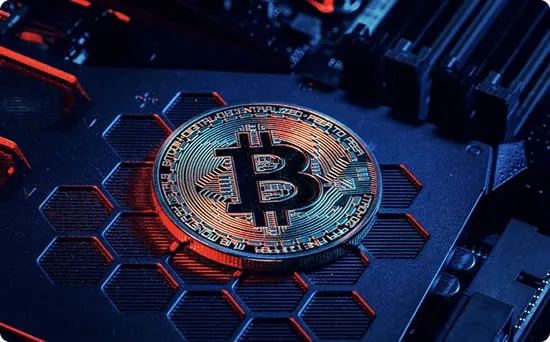

Inception in 2009 marked the genesis of Bitcoin, a transformative force in digital currency, celebrated for its decentralized and transparent attributes. Conversely, the advent of Non-Fungible Tokens (NFTs), a more recent disruptor, has redefined digital ownership, leveraging blockchain to authenticate unique assets. The amalgamation of Bitcoin and NFTs holds profound significance, harmonizing Bitcoin’s stability as a value store with the unparalleled uniqueness and ownership assurances embedded in NFTs. This guidebook embarks on an exploration of the intricate relationship between Bitcoin and NFTs, delving into technical nuances, potential applications, and the prospective trajectory of this integrated digital landscape. Amidst this transformative journey, it’s worth noting the emergence of online trading platforms like Immediate Ewave, providing users with unique opportunities to engage with these dynamic digital assets.
Bitcoin, conceived by the pseudonymous Satoshi Nakamoto, emerged as a response to the 2008 financial crisis. It introduced a decentralized, peer-to-peer electronic cash system, underpinned by blockchain technology.
At its core, Bitcoin relies on cryptographic principles and a proof-of-work consensus mechanism, ensuring security and decentralization. The blockchain, a public ledger, records all transactions transparently.
NFTs, building upon blockchain technology, gained prominence with Ethereum’s introduction of ERC-721 tokens in 2017. These tokens, unique and indivisible, provided a breakthrough in digital ownership.
NFTs function as smart contracts on the blockchain, certifying the authenticity and ownership of digital or physical assets. Each token, distinct from any other, is indivisible and tamper-resistant.
Bitcoin’s primary function as a store of value, akin to digital gold, provides stability and permanence in the volatile world of cryptocurrencies.
NFTs bring the concept of true digital ownership to the forefront, allowing users to have provable ownership of unique assets in the digital space.
The integration addresses scalability challenges by exploring Layer 2 solutions, such as the Lightning Network, enabling faster and more cost-effective transactions.
Environmental concerns are addressed directly, with forward-thinking solutions aiming to diminish the carbon footprint associated with Bitcoin and NFT transactions.
The Lightning Network, a layer atop the Bitcoin blockchain, facilitates faster and more scalable transactions, particularly suited for micropayments and NFT interactions.
Sidechains offer additional avenues for Bitcoin-NFT integration, providing off-chain solutions that enhance transaction throughput and flexibility.
The integration of Bitcoin and NFTs allows for the tokenization of real estate, providing liquidity and fractional ownership opportunities in a traditionally illiquid market.
The art world benefits from NFTs, enabling artists to tokenize their work, proving authenticity, and ensuring fair compensation through decentralized marketplaces.
Bitcoin-NFT integration opens avenues for NFTs to flourish within the Bitcoin ecosystem, fostering cross-platform interoperability and collaboration.
The integration facilitates interaction with other blockchain networks, creating a dynamic and interconnected digital landscape.
Standardization of NFTs ensures compatibility and interoperability, allowing seamless integration across different blockchain networks.
The development and adoption of BIPs contribute to the technical enhancements necessary for the integration, fostering a standardized approach.
Addressing security concerns is paramount, with ongoing efforts to identify and mitigate potential risks associated with Bitcoin-NFT integration.
Privacy-enhancing technologies are being explored to safeguard user data and transaction details within the integrated ecosystem.
Continuous technological advancements will shape the Bitcoin-NFT integration landscape, introducing more efficient and sustainable solutions.
The evolving regulatory landscape will play a crucial role in shaping the future of Bitcoin-NFT integration, defining permissible use cases and compliance standards.
Collaborative initiatives within the community will drive further integration, fostering partnerships and synergies between projects.
DAOs will likely emerge as influential entities, shaping the governance and development of integrated systems in a decentralized manner.
In conclusion, the amalgamation of Bitcoin and NFTs presents a distinctive and potent synergy, harmonizing the steadiness inherent in Bitcoin with the verifiable authenticity and ownership assurances offered by NFTs. Advocating for continued exploration and adoption of Bitcoin-NFT integration becomes pivotal, propelling the advancement of decentralized digital ecosystems. Looking ahead, the future unfolds with promising prospects for Bitcoin-NFT integration, as sustained progress and community-led endeavors stand ready to redefine the digital terrain, ushering in a new era of possibilities.
He argued that higher education must go beyond merely advancing knowledge to doing so innovatively…
In a bid to address the global menace of climate change, the Kogi State House…
"For APC, their convention is dangerous, and the convention will mark the beginning of..."
The kidnappers had last Saturday demanded the sum equivalent of N300 million naira in foreign…
"a coalition of hoaxers and self-obsessed merchants of vendetta, a roll call of Nigeria’s me-or-nothing…
Sokoto State Executive Council, led by Governor Ahmed Aliyu Sokoto, has approved a series of…
This website uses cookies.